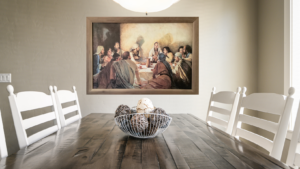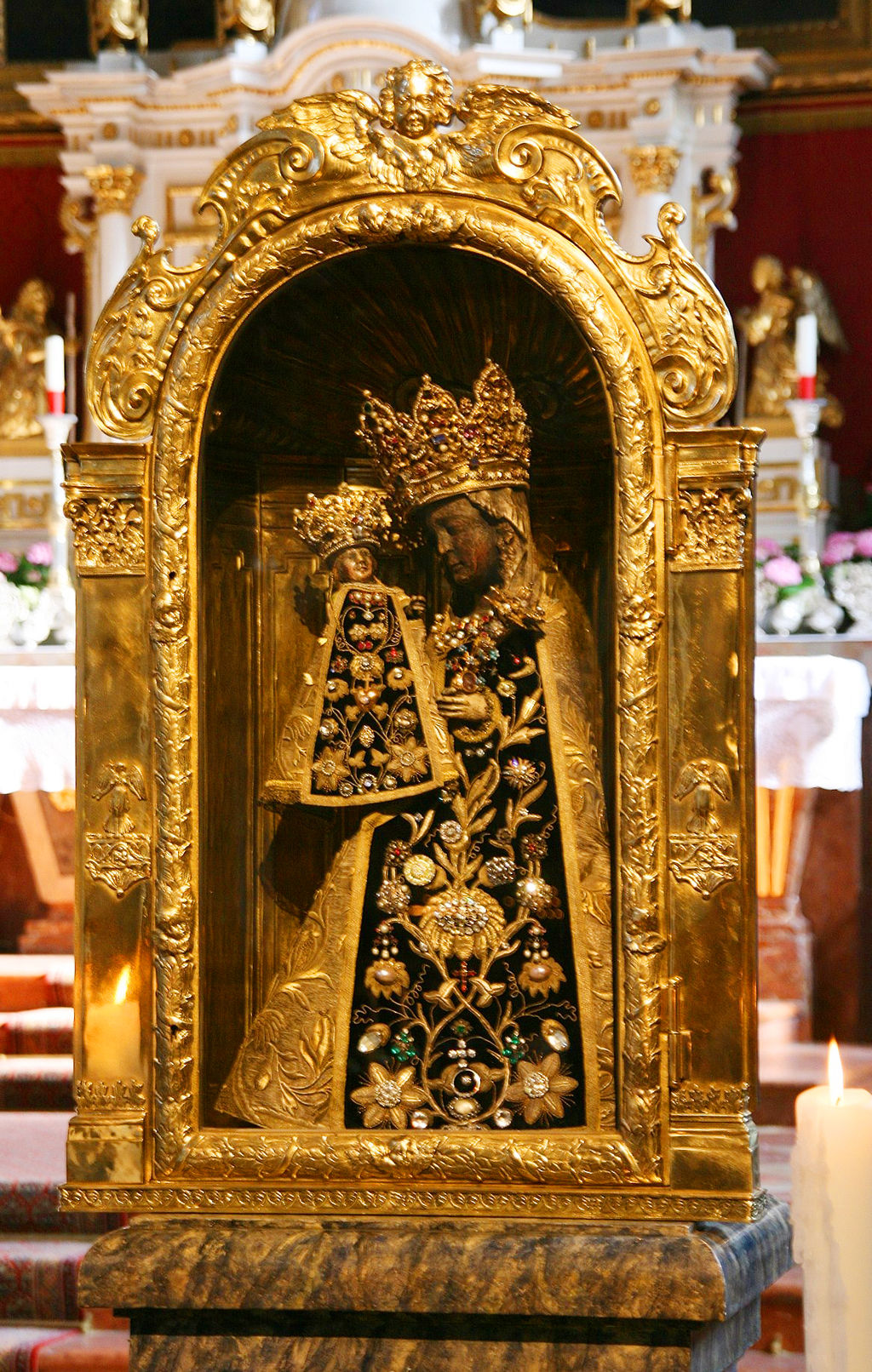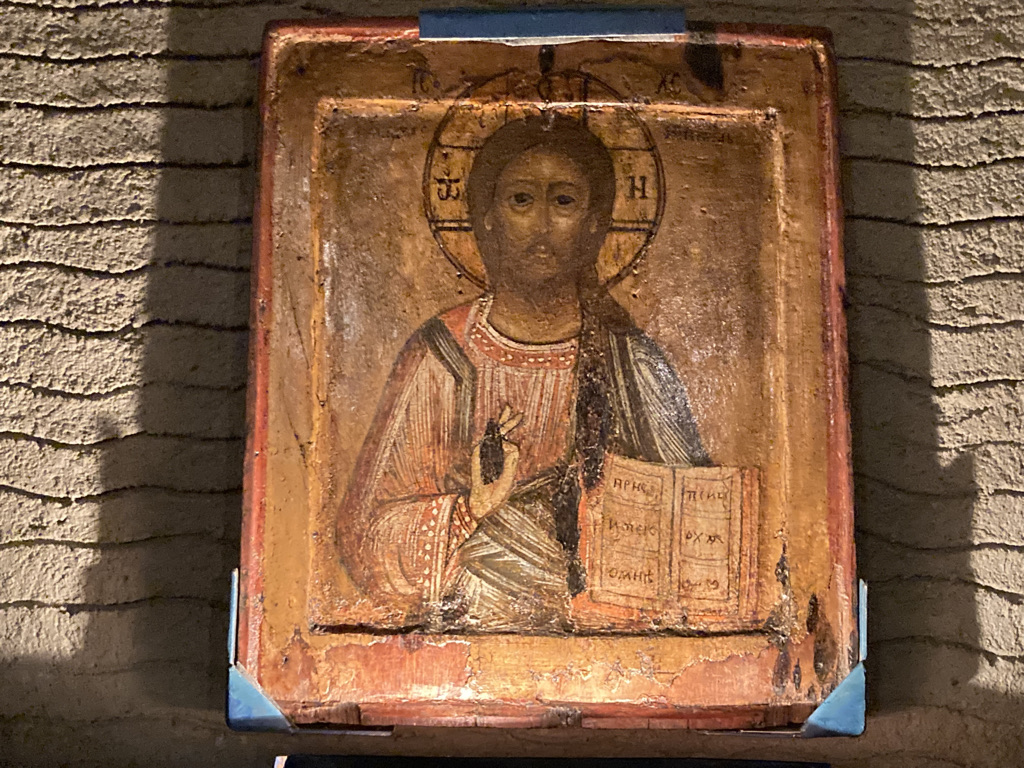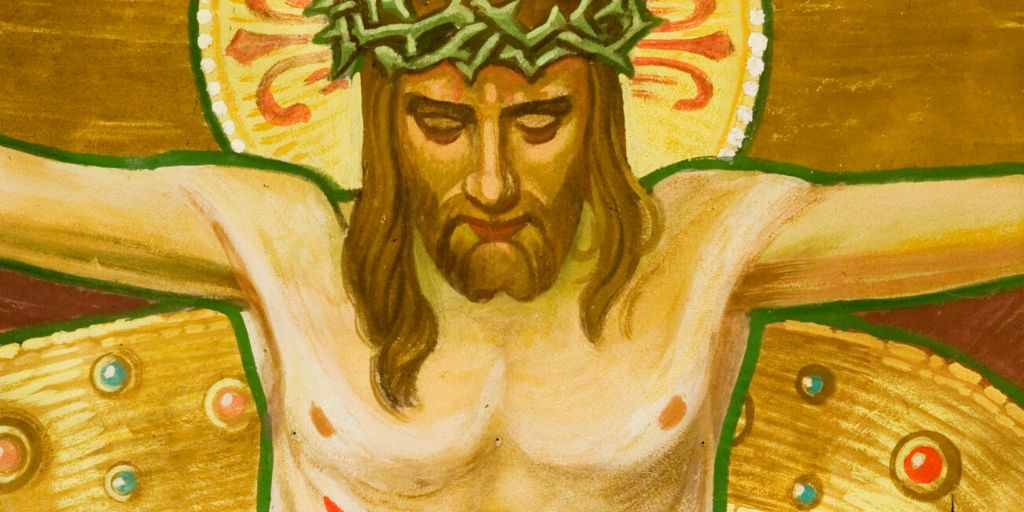Visitation
“… Our birth is but a sleep and a forgetting:
The Soul that rises with us, our life’s Star,
Hath had elsewhere its setting,
And cometh from afar:
Not in entire forgetfulness,
And not in utter nakedness,
But trailing clouds of glory do we come
From God, who is our home:
Heaven lies about us in our infancy …
… The Clouds that gather round the setting sun
Do take a sober colouring from an eye
That hath kept watch o’er man’s mortality …”
William Wordsworth
Ode: Intimations of Immortality from
Recollections of Early Childhood (1)
Visitation
May is the month our church sets aside each year to honor the Blessed Virgin Mary.
In 2024, May includes at least five significant liturgical celebrations:
- Solemnity of the Ascension of the Lord, Thursday, May 9 (or Sunday, May 12);
- Optional Memorial of Our Lady of Fatima, Monday, May 13;
- Solemnity of Pentecost on May 19;
- Memorial of the Blessed Virgin Mary, Mother of the Church, Monday, May 20;
- Feast of the Visitation of the Blessed Virgin Mary on Friday, May 31.
This month opens with the second Glorious Mystery of the Rosary, encompassing two additional Marian holy days as well as another Solemnity, the third Glorious Mystery, and concludes with the second Joyful Mystery — enough to make anyone’s head spin.
Decades ago, when our planet seemed safer and more civilized than it does today, I was blessed with opportunities to visit several Catholic shrines as a pilgrim.
It’s impossible to do justice to the full set of liturgical crescendos this month contains in a brief article for a first Saturday. But I offer a few reflections here about the opening solemnity and the closing feast from my pilgrimages to shrines in the Holy Land.
***

Christian Chapel of the Ascension on the Mount of Olives – Jerusalem, Israel
Fallaner, CC BY-SA 4.0 <https://creativecommons.org/licenses/by-sa/4.0>, via Wikimedia Commons
A small Christian monument called the Chapel of the Ascension stands on the Mount of Olives in Jerusalem, not to be confused with the larger mosque that looms nearby.
This probably does mark the place where Jesus proclaimed his majestic final commission to the apostles, the ‘go out into all the world’ speech we hear in the gospel reading for the Solemnity of the Ascension, Mark 16:15-20. (2)
But even though the chapel contains an ancient footprint in its rock floor that legend describes as made by Our Lord’s right foot when he departed, this holy place on the Mount of Olives may, or may not, be where Jesus actually ascended into heaven.
Some scholars, as well as many local Christians whose families have lived here for generations, believe the Ascension might have occurred elsewhere.
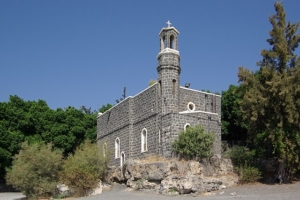
Church of the Primacy of Saint Peter – Tabgha, Israel
Berthold Werner, CC BY-SA 3.0 <https://creativecommons.org/licenses/by-sa/3.0>, via Wikimedia
Commons
Another possible location hosts the small Church of the Primacy of Peter, on the northwest banks of the Sea of Galilee, believed to be where Jesus fed his friends one last breakfast of freshly-caught fish, as described in John 21. (3)
That rocky shoreline is also visited by thousands of Christian pilgrims, both Catholic and Protestant. It’s an alternative place where some believe the Ascension might actually have taken place.
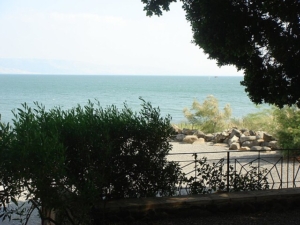
View of the Sea of Galilee – from the Church of the Primacy of Saint Peter, Tabgha, Israel
someone10x, CC BY 2.0 <https://creativecommons.org/licenses/by/2.0>, via Wikimedia Commons
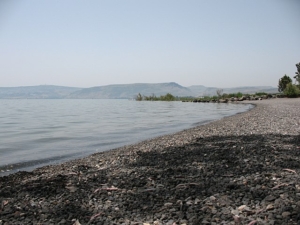
Shore beside the Church of the Primacy of Saint Peter – Tabgha, Galilee, Israel.
https://www.flickr.com/photos/emeryjl/, CC BY 2.0 <https://creativecommons.org/licenses/by/2.0>, via
Wikimedia Commons
Wherever it occurred, the description of the Ascension in Acts 1:6-12 (4) tells us that the gathered apostles received a visitation from ‘two men dressed in white,’ usually interpreted as angels.
These men appeared ‘suddenly,’ admonishing the disciples to stop looking ‘up at the sky,’ and promising that Jesus would ‘return the same way he departed.’
***
Two distinct Visitation shrines hold importance in the town of Ein Karem, once a small village in the Judean hills, now considered a ‘suburb’ of sprawling modern Jerusalem.
The first is the Church of St. John the Baptist, in downtown contemporary Ein Karem.
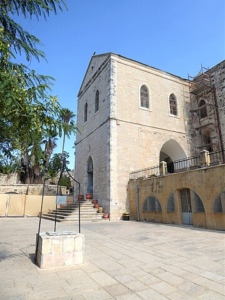
Courtyard and Entrance to Church of Saint John the Baptist, Ein Karem, Israel.
Chris06, CC BY-SA 4.0 <https://creativecommons.org/licenses/by-sa/4.0>, via Wikimedia Commons
By tradition dating back to Saint Helen, mother of the Byzantine emperor Constantine, and supported by archeological research through layers of Crusader construction, there is evidence to believe that John the Baptist was born in the now-underground cave on this site.
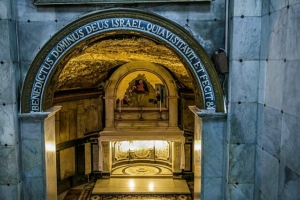
Birth Cave of Saint John the Baptist, Ein Karem, Israel
Pikiwiki Israel, CC BY 2.5 <https://creativecommons.org/licenses/by/2.5>, via Wikimedia Commons
A fountain in the courtyard appears to have been the original village water source, probably located on the temple property where Elizabeth’s husband Zacharias was serving as Jewish priest when an angel appeared to him to announce the news of his son. Their primary dwelling is believed to have been here, or very close by.
Higher into the foothills is a site traditionally identified as the family’s summer home, and many scholars believe that this would have been where young Mary went to visit her much older cousin.
A curving, terraced brick pathway with very wide steps winds around the steep mountain trail today, leading up from the main village to the Church of the Visitation.
This shrine is a much larger complex, a former monastery. In contrast to the lower church in Ein Karem, where John the Baptist’s family is highlighted, the Church of the Visitation contains imagery devoted almost exclusively to Mary.
Detail of Front Facade – Church of the Visitation – Ein Karem, Israel. Elizabeth is pictured at
upper left.
Berthold Werner, CC BY-SA 3.0 <https://creativecommons.org/licenses/by-sa/3.0>, via Wikimedia
Commons
The exception is a sculpture in strikingly contemporary style, portraying two pregnant women, facing each other.
***
Paradoxically, as liturgical time runs forward in May, divine time seems to spin backward, in earthly terms, to the moment when two unborn infants recognized each other from within their mothers’ wombs.
It was only after a very young woman — who had said “yes” to a divine act with consequences she could not possibly have fully understood — had received affirmation and confirmation from her wiser, more experienced cousin, that she burst into the Magnificat.
Sober sunset clouds will gather. One of these babies will be beheaded. One will die by crucifixion.
But these are the moments when Wordsworth’s “… eye that hath kept watch o’er man’s mortality …” is most deftly invoked by the poet.
Penance, Baptism, Resurrection, and Ascension will change the whole game.
“The ‘clouds of glory’ that these babies ‘trail’ contain Eternity for those who believe.”
May enduring faith, hope, and love guard your hearts this May.
Veni Sancte Spiritus.
Featured Photo: Panoramic View – Church of the Visitation – Ein Karem, Israel Attribution Tombah, CC0, via Wikimedia Commons
Notes:




